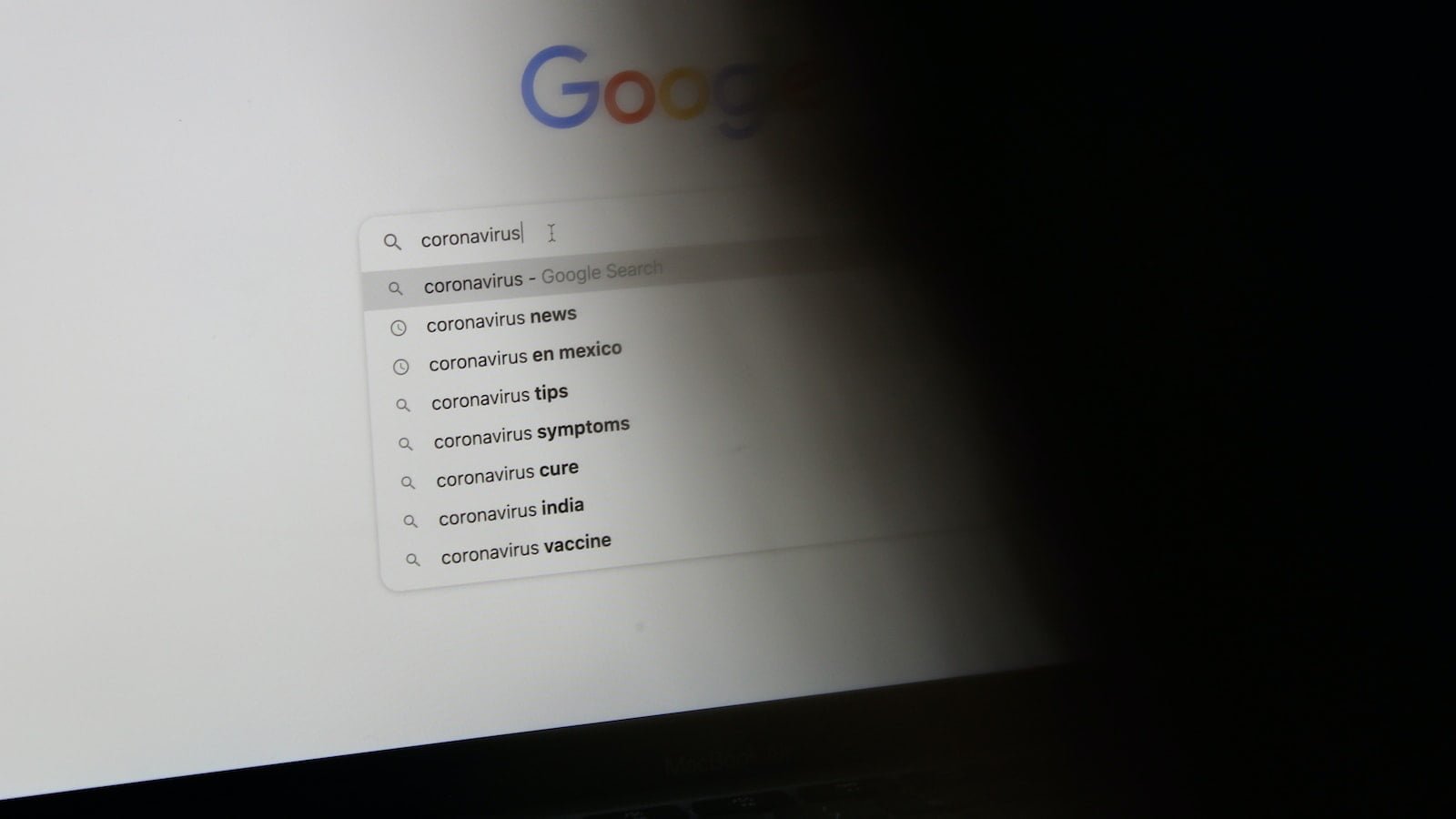In this fast-paced digital world where milliseconds can make or break a business, understanding Google’s Core Web Vitals has become crucial for unlocking peak performance on the web. With countless websites vying for users’ attention and loyalty, the battleground for success has shifted to providing the best user experience. But fear not, as we embark on a journey of discovery into the intricate world of Core Web Vitals, we will unveil the secrets to mastering these critical performance metrics and propelling your website to newfound greatness. So fasten your seatbelts and prepare to delve into this adventure of optimizing your digital masterpiece, as we unravel the secrets that lie within Google’s Core Web Vitals.
Table of Contents
- Understanding Google’s Core Web Vitals: Impact on Website Performance
- Optimizing Largest Contentful Paint (LCP) for Lightning-Fast Loading
- Enhancing First Input Delay (FID): Improving User Interaction
- Improving Cumulative Layout Shift (CLS) for Seamless Browsing Experience
- Q&A
- Wrapping Up

Understanding Google’s Core Web Vitals: Impact on Website Performance
Google’s Core Web Vitals are a set of essential metrics that measure the performance of a website. Designed to assess user experience, these metrics highlight areas for improvement, helping website owners enhance their online presence. By understanding and mastering these web vitals, you’ll be armed with the knowledge to unlock peak performance for your website.
1. Largest Contentful Paint (LCP): LCP measures how quickly the main content of a web page loads. It marks when the largest image or text block becomes visible to users, indicating how fast your page renders. Aim for an LCP of under 2.5 seconds, as a longer load time can lead to users bouncing off your site in frustration.
2. First Input Delay (FID): FID measures the time it takes for a web page to become interactive. It gauges how long it takes for users to interact with your site after they click or tap on a link or button. A low FID, ideally below 100 milliseconds, ensures a smooth and responsive user experience.
3. Cumulative Layout Shift (CLS): CLS measures the visual stability of your web page while it loads. It quantifies unexpected layout shifts that may annoy users, such as elements jumping around or buttons relocating just when someone is about to click. Aim for a CLS score of less than 0.1, ensuring a seamless browsing experience for your visitors.
By keeping an eye on these Core Web Vitals, you can make informed decisions about website optimizations to improve load times, interactivity, and visual stability. Remember, a fast and user-friendly website not only enhances user experience but also boosts your chances of ranking higher on Google search results. So, let’s delve into the nitty-gritty of these Core Web Vitals and unlock the true potential of your website’s performance.
Optimizing Largest Contentful Paint (LCP) for Lightning-Fast Loading
Largest Contentful Paint (LCP) is a crucial metric in Google’s Core Web Vitals that measures how quickly the main content of a web page becomes visible to users. Optimizing LCP plays a vital role in ensuring lightning-fast loading times, which in turn enhances user experience and boosts search engine rankings. But fear not, even if you’re new to the world of web development, we’ve got you covered with some handy tips and tricks to unlock peak performance.
1. Choose the Right Web Hosting: Opt for a reliable and high-performing web hosting provider to ensure your website loads swiftly. A slow server can significantly impact LCP, so it’s essential to invest in a hosting provider that prioritizes speed and reliability.
2. Compress and Resize Images: Large images can bog down your website’s loading speed, leading to a poor LCP score. Make sure to compress and resize your images before uploading them to your website. There are several free online tools and plugins available that can help you optimize your images without compromising quality.
3. Minimize JavaScript and CSS: Excessive JavaScript and CSS can slow down your website’s rendering, which can negatively impact LCP. Minimize and combine these files to reduce the overall size of your website, helping it load faster.
4. Leverage Browser Caching: Enable browser caching to store certain website elements, such as images, CSS, and JavaScript, on the user’s device. This way, when users revisit your website, their browser can quickly retrieve the cached content, resulting in faster loading times and improved LCP.
5. Content Delivery Network (CDN): Consider utilizing a CDN, which distributes your website’s content across multiple servers worldwide. This ensures that users can access your website from a server closest to their location, minimizing latency and improving LCP.
By implementing these techniques, you’ll be well on your way to optimizing LCP and unlocking lightning-fast loading times for your website. Remember, a faster website not only delights your users but also helps your website climb up the search engine rankings, so it’s a win-win situation!
Enhancing First Input Delay (FID): Improving User Interaction
The performance of a website is crucial to ensuring a seamless user experience. One aspect that significantly impacts user interaction is First Input Delay (FID). FID measures the time it takes for a user’s browser to respond after they interact with a webpage, such as clicking a button or entering text in a field. A high FID can lead to frustrating delays and hinder user engagement.
To enhance FID and improve user interaction, it is important to optimize various elements of your website. Here are some simple yet effective tips to unlock peak performance:
– Minimize JavaScript Execution: Excessive JavaScript can significantly slow down your website. Consider removing unnecessary scripts or deferring their execution until after the page loads to reduce FID.
– Optimize CSS: Large CSS files can delay user interactions. Minify and compress your CSS, remove unused styles, and utilize CSS-in-JS techniques to streamline your stylesheets.
– Reduce Third-Party Scripts: Third-party scripts, like ad trackers or social media widgets, can add extra weight to your webpage. Evaluate and limit the use of these scripts, or load them asynchronously to prevent them from blocking user interactions.
– Prioritize Critical Resources: Ensure that critical resources, such as CSS and JavaScript needed for initial rendering, are loaded first. This allows users to interact with your website faster, increasing their engagement.
– Utilize Browser Caching: Leverage browser caching to store frequently accessed resources locally. This reduces the need to download them repeatedly and improves site performance.
By implementing these optimization techniques, you can greatly enhance FID and elevate your users’ experience. Remember, a faster and more responsive website translates into increased user satisfaction, improved engagement, and higher conversion rates. So, why wait? Start mastering Google’s Core Web Vitals today and unlock the peak performance of your website!
Improving Cumulative Layout Shift (CLS) for Seamless Browsing Experience
Cumulative Layout Shift (CLS) is an important metric that measures how much visual stability your website offers to users. It refers to unexpected and disruptive layout shifts that occur during the loading phase of a webpage. These shifts can be frustrating for users, especially when they inadvertently click on buttons or links that have moved due to the layout shift. To provide a seamless browsing experience, it is crucial to improve your website’s CLS.
Here are some tips to help you improve the Cumulative Layout Shift and unlock peak performance for your website:
– Optimize image and video dimensions: Ensure that you specify the dimensions for your images and videos correctly. This allows the browser to reserve the required space even before the content is loaded, reducing potential layout shifts.
– Use CSS animations and transitions wisely: While animations and transitions can enhance the user experience, they can also contribute to layout shifts if not implemented properly. Be mindful of the duration and timing of your animations to minimize any disruption.
– Prioritize above-the-fold content: Load and render above-the-fold content first to ensure that users can start engaging with your website immediately. This prevents them from experiencing sudden layout shifts while scrolling or interacting with the page.
– Use preloading techniques: Preloading critical resources, such as fonts and scripts, can reduce the likelihood of layout shifts caused by delayed loading. Use the “preload” attribute in HTML or CSS to prioritize essential elements.
– Test your website across different devices and screen sizes: CLS can vary on different devices and screen sizes, so it’s essential to test your website thoroughly. Emulate various devices using browser developer tools or consider using real devices for testing. This will help identify and address any CLS issues specific to certain platforms.
By implementing these strategies, you can enhance your website’s Cumulative Layout Shift and provide users with a smooth and seamless browsing experience. Remember, prioritizing user experience and minimizing disruptions are key to mastering Google’s Core Web Vitals.
Q&A
Q: What are Google’s Core Web Vitals and why are they important?
A: Google’s Core Web Vitals are a set of user-experience metrics that measure crucial aspects of website performance, including loading speed, interactivity, and visual stability. They are important because they directly impact how users perceive and engage with websites. Optimizing for Core Web Vitals can significantly improve user satisfaction and overall website performance.
Q: How can I measure and assess my website’s Core Web Vitals?
A: Google offers a variety of tools to measure and assess your website’s Core Web Vitals. The most commonly used tool is PageSpeed Insights, which provides detailed reports on various performance aspects including Core Web Vitals. Additionally, Google Search Console offers a Core Web Vitals report tailored specifically for your website, providing invaluable insights and recommendations to improve performance.
Q: What are some strategies to improve Core Web Vitals and unlock peak performance?
A: Improving Core Web Vitals requires a comprehensive approach. Start by optimizing your website’s loading speed, ensuring images and assets are properly compressed and utilizing browser caching. Enhance interactivity by reducing JavaScript execution time and utilizing modern techniques like lazy loading. To tackle visual stability, make sure elements do not shift or move unexpectedly during page rendering. Compressing files, minimizing render-blocking resources, and utilizing Content Delivery Networks (CDNs) can also contribute to improved performance.
Q: How do Core Web Vitals affect search engine rankings?
A: Google has stated that starting from May 2021, Core Web Vitals will be included as ranking factors for search results. While still just one component among many, websites with better Core Web Vitals are likely to get a slight boost in their rankings. Therefore, optimizing your website for Core Web Vitals not only improves user experience but also increases the chances of ranking higher in search engine results.
Q: Are there any additional benefits to optimizing for Core Web Vitals?
A: Absolutely! Apart from improving search engine rankings and user experience, optimizing for Core Web Vitals also leads to higher conversion rates, increased engagement, and reduced bounce rates. When users have a seamless experience on your website, they are more likely to stay longer, explore further, and ultimately convert into customers or loyal users. It’s a win-win for both your business and your users.
Q: How frequently should I monitor and update my website’s Core Web Vitals?
A: Monitoring and updating your website’s Core Web Vitals should be an ongoing process. As performance standards evolve, it is crucial to stay up to date and adapt accordingly. Regularly check the latest Core Web Vitals reports provided by Google and leverage the recommended optimization techniques. Continuously measuring, monitoring, and improving your website’s performance will ensure it remains optimized and competitive in the ever-evolving digital landscape.
Q: Can I achieve good Core Web Vitals without compromising on design and functionality?
A: Yes, it is possible to achieve good Core Web Vitals without compromising on design and functionality. In fact, optimizing for Core Web Vitals often includes best practices that align with user-centric design and development principles. By adopting a performance-first mindset from the start of your design process, you can strike a balance between aesthetics, functionality, and performance. With careful planning and implementation, your website can deliver a seamless user experience while meeting the necessary Core Web Vitals benchmarks.
Wrapping Up
As we come to the end of our journey in unlocking peak performance and mastering Google’s Core Web Vitals, one thing is abundantly clear – the quest for digital excellence knows no bounds.
Throughout this article, we have traversed the labyrinth of web performance, unraveling the enigmatic threads that weave together a truly exceptional online experience. From understanding the significance of Core Web Vitals to implementing strategic optimizations, we have delved into the inner workings of Google’s algorithms.
But beyond the technical intricacies lies a world teeming with possibilities, where heightened engagement, increased conversions, and unwavering user loyalty intertwine. It is within this realm that the visionary web creators strive to transcend the boundaries of mediocrity, propelling their online platforms to uncharted heights.
Our exploration of Core Web Vitals has equipped us with not just knowledge, but a profound understanding of the art and science behind a performance-conscious website. As we part ways, dear reader, we implore you to keep the flame of improvement burning bright within you. Embrace the unwavering commitment to excellence, for it is this voracious hunger for progress that propels us toward greatness.
Remember, the path to unlocking peak performance is ever-evolving, a thrilling ride that demands perpetual motion. Stay vigilant, adapt to the ever-changing digital landscape, and embrace the data-driven insights that reveal the true intricacies of your website’s performance.
So, as we bid farewell, let us carry this newfound wisdom with us, fueling our ambitions, and crafting digital experiences that strike a symphony of joy within our users’ hearts. May this article be the catalyst that ignites passion and unveils a new era of limitless possibilities.
Unlock your website’s true potential, embrace the untamed realm of Core Web Vitals, and forge ahead towards a future where peak performance is not just a goal to be reached, but a reality to be lived.
Farewell, fellow seekers of peak performance, and may your digital endeavors be forever marked by the indomitable spirit of excellence.

